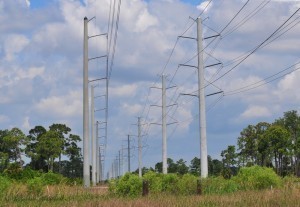Power lines dimensions vary greatly. Many are hundreds of feet long. However, some are much longer. The longest is the Inga-Shaba power line. It stretches for 1,056 miles or 1,7,00 km.
Other Power Line Records
The longest power line span is 5,376 m (17,638 ft) for the Ameralik Span. There are also many submarine cables of immense length. These include the NorNed, North Sea cable. It is 580 kilometers / 360 miles long. The Basslink, Bass Strait cable is 290 kilometers / 180 miles long. Its overall total length is 370.1 kilometers / 230 miles.
The Baltic-Cable at the Baltic Sea is 238 kilometers / 148 miles long. The HVDC is 250 kilometers / 155 miles long. The entire length is 262 kilometers / 163 miles. The tallest pylons are those on the Yangtze River Crossing. It is 345 m/1,132 ft high.
The biggest double circuit transmission is the Kita-Iwaki Powerline. The Powerline Ekibastuz-Kokshetau has the highest transmission line voltage. It is 1.15 MV. The biggest capacity is 6.3 GW HVDC Itaipu in Brazil.
What is the Power Transmission Line?
Regardless of the power lines dimensions, their purpose is the same: to transmit electricity. The power transmission line transfers power and electricity from point A to point B. The power usually emanates from a power plant. From the power plant it goes to the substation.
The substation is connected to lines that transmit power to homes, offices, factories and other establishments. These lines are called power distribution lines. To laymen though, it is simply called the power transmission line.
Design and Architecture
Majority of power lines are made up of several conductive wires. These are an inch (25.4 mm) in diameter. Most of the time, there are three wires. The shield wire is set on top of them. Its purpose is to keep lightning away from the wires.
Without it, the lines will fail more quickly. Electrical storms are often accompanied by power surges. Minus the shield wire, the power surges have the potential to damage appliances and electronic equipment.
The high transmission line refers to the line that emanates from the power plant and goes to the substation. The voltage is mostly transmitted at this line.
The power lines dimensions determine how much kilo-volts it can carry. A high-powered power line can transmit over 750 kilo-volts. The lines used to power residential homes carry only 24 kilo-volts on the average.






